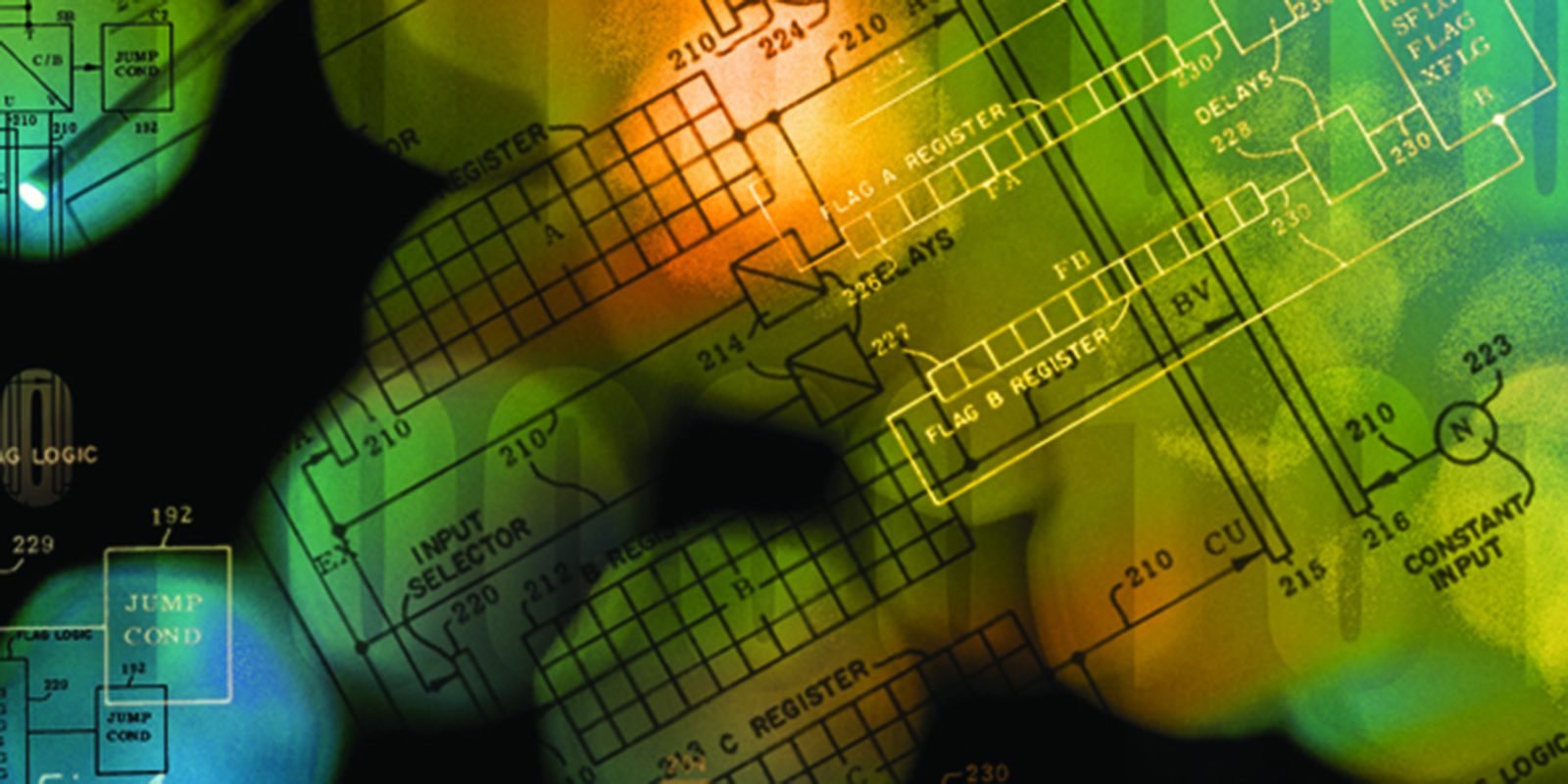
Antidote to Toxic Divisionals—European Patent Office Rules on Partial Priorities
Beginning in 2009, the Boards of Appeal of the European Patent Office ("EPO") issued a series of decisions that essentially created a new priority law in Europe that allowed members of the same patent family to negate each other's novelty. Notions such as "poisonous priorities" and "poisonous or toxic divisionals" emerged, threatening patent holders and raising concerns among patent practitioners and scholars. Confirming principles established for priority rights by the Paris Convention, the recent decision G1/15 of the Enlarged Board of Appeal of the EPO ("EBA" or "Board") has put an end to this jurisprudence.
Summary of the Enlarged Board of Appeal's Decision
The EBA recently issued its decision G 1/15 that deals with the question of whether entitlement to partial priority for a claim encompassing alternative subject matter, by virtue of one or more generic expressions or otherwise (so-called generic "OR"-claim), may be refused in case the subject matter of such a claim would be broader compared to what has been disclosed in the priority document.
The concept of "partial priority" refers to the situation in which part of the subject matter of a claim is entitled to the priority date of a single earlier application and the remaining subject matter is entitled to the priority date of a later priority document or of the application itself. The aforementioned concept has become particularly relevant for patent families comprised of divisional applications wherein the content of one application (e.g., divisional) was awarded the priority of an earlier priority application and the claim of another application (e.g., parent) was only awarded the priority of a later application (e.g., the application date) because it was broader than the content of the earlier priority application. In such a situation, the publication of the earlier priority document (in case it was a European patent application), or the later filed divisional application, could destroy the novelty for the subject matter of the parent application. Such terms as "poisonous priority" or "toxic divisional" were coined to describe this situation.
In construing the relevant provisions of the European Patent Convention ("EPC"), the EBA concluded that under the requirements of the EPC, priority may not be refused on the ground that an application claiming one or more priorities contains one or more elements that were not included in the application(s) for which priority is claimed. The EBA went on to state that in case the subject matter, which is claimed in the application or in the patent claiming said priority, has been disclosed for the first time, directly, or at least implicitly, unambiguously, and in an enabling manner in the priority document, partial priority is given. No other substantive conditions or limitations apply in this respect.
With this decision, the EBA has introduced a conceptual split of the subject matter of a claim into two (or more) parts with each enjoying its own partial priority. As a result, it will no longer be possible for a divisional application to be cited as prior art against its parent application or vice versa.
Background
This is the third time that the EBA has had to decide under which conditions an application can claim priority from an earlier application.
The generally accepted interpretation of the concept of priority established by the Paris Convention for the Protection of Industrial Property ("Paris Convention"), in particular Article 4A(1), is that the subsequent filing had to concern the same subject matter as the first filing on which the right of priority was based.
In its decision G 3/93 (Headword: "Priority Interval"), the EBA considered that a claimed subject matter consisting of the features A + B + C is different from a combination containing only the features A + B, irrespective of the nature of the added element. In such a case, the claimed combination of A + B + C could not claim priority from a document disclosing features A + B only.
In its decision G 2/98 (Headword: "Requirement for Claiming Priority of the 'Same Invention'"), the EBA had to decide under which conditions a claim can enjoy multiple priorities. In evaluating multiple priorities for the same claim of an application, the EBA made a distinction between the following situations:
(i) "AND"-claim (combination A + B versus A in the priority document)
(ii) "OR"-claim (combination A or B (or C including A and B) versus A in the priority document).
The Board concluded that "it clearly follows that, according to the legislator, multiple priorities as exemplified in (i) cannot be claimed for an "AND"-claim." In contrast to this, the Board ruled that if a first priority document discloses a feature A, and a second priority document discloses a feature B for use as an alternative to feature A, then a claim directed to A or B can enjoy the first priority for part A of the claim and the second priority for part B of the claim. These two priorities may also be claimed for a claim directed to C, if the feature C, either in the form of a generic term or formula, or otherwise, encompasses feature A as well as feature B. According to the Board in G 2/98, "the use of a generic term or formula in a claim for which multiple priorities are claimed in accordance with Article 88(2), second sentence, EPC is perfectly acceptable under Articles 87(1) and 88(3) EPC, provided that it gives rise to the claiming of a limited number of clearly defined alternative subject-matters."
In a number of Technical Board of Appeal ("TBA") decisions following decision G 2/98, the phrase "provided that it gives rise to the claiming of a limited number of clearly defined alternative subject-matters" has been taken as justification for refusing partial priority for a generic "OR"-claim. The basis for this decision goes back to case law in the field of chemistry. Chemistry case law generally rules that a generic formula in a claim does not spell out every possible alternative compound in individualized form and that even if such compounds might be intellectually envisaged to fall within the scope of the claim, it does not make up for a clear and unambiguous presence of these alternatives, individualized as such, in the claim. This means, for example, that the sole mention of halogen in a claim does not disclose the individualized forms of fluorine, chlorine, bromine, or iodine, per se.
Following decision G 2/98, there have also been Board of Appeal decisions acknowledging partial priority in scenarios as described above, the Opposition Division in the case leading to the interlocutory decision T 557/13, on which decision G 1/15 is based, came to the conclusion that the subject matter of the claims did not represent the same invention as that set out in the priority document because the claims resulted from a generalization of a more specific disclosure in the priority document. Consequently, the priority was held invalid.
Since the law before and after G 2/98 has not been applied uniformly and because the right to claim priority is a question of fundamental importance, the TBA in case T 557/13 referred the following questions to the EBA:[1]
1. Where a claim of a European patent application or patent encompasses alternative subject-matters by virtue of one or more generic expressions or otherwise (generic "OR"-claim), may entitlement to partial priority be refused under the EPC for that claim in respect of alternative subject-matter disclosed (in an enabling manner) for the first time, directly, or at least implicitly, and unambiguously, in the priority document?
…
5. If an affirmative answer is given to question 1, may subject-matter disclosed in a parent or divisional application of a European patent application be cited as state of the art under Article 54(3) EPC against subject-matter disclosed in the priority document and encompassed as an alternative in a generic "OR"-claim of the said European patent application or of the patent granted thereon?
T 557/13 concerned European patent No. 0 921 183 ("183 patent"), which was granted based on a divisional application of European patent application No. 95 923 299.2 ("parent application"). Claim 1 of the 183 patent was broader both in relation to the generic definition of the compound used as well as to the weight range of this compound in the composition. Since the subject matter of claim 1 was defined by a generic formula and a continuous range of numerical values, such a claim could be viewed as a generic "OR"-claim encompassing, without spelling them out, alternative subject matters having all the features of the claim.
Decision of the EBA
Additionally, in preparation for the oral proceedings, the EBA invited the President of the European Patent Office and third parties to give their views on the points referred.
The President of the EPO stated that the strict approach adopted by some Boards of Appeal seems to be at odds with the EBA jurisprudence, whereas the broader approach may be too abstract in the light of the requirement for "the claiming of a limited number of clearly defined alternatives" stipulated in G 2/98.
The amicus curiae briefs filed with the EBA represented arguments in favor of a negative answer to question one and represented arguments in favor of a positive answer to question one.
The EBA made it clear that, in order to answer the questions posed, it was vital to interpret the intended meaning of the phrase "provided that it gives rise to the claiming of a limited number of clearly defined alternative subject-matters" in decision G 2/98 (reasons point 6.7). An interpretation of the intended meaning would indicated whether it gives rise to a further test to be complied with for a claim to partial priority.
Before addressing this question, the EBA examined the legal framework of the concept of priority as provided by the EPC. According to the EBA, priority is a right and where a right is established by an international treaty or convention, or by national law, it cannot be restricted by imposing supplementary conditions in administrative rules or guidelines or even in jurisprudence.
With respect to both partial and multiple priorities, the EBA stated that Article 88(3) EPC[2] is to be interpreted in such a way that the elements which can be directly and unambiguously derived from the one or more priority applications constitute what may benefit from partial priority. According to the EBA, if a claim in the later application is broader than an element disclosed in the priority document, then priority may be claimed for such element, but not for all other embodiments encompassed by the claim(s). Further, the sole substantive condition for validly claiming priority is that the priority document and the subsequent filing are directed to the same invention (Article 87(1) EPC and Article 4C(4) of the Paris Convention ("same subject")). Thus, the EBA came to a conclusion that the proviso laid down in G 2/98 cannot be construed as implying a further limitation of the right of priority.
Finally, the EBA addressed how an assessment of the "same invention" has to be carried out. According to G 2/98, the concept of "the same invention" required that "the skilled person can derive the subject matter of the claim directly and unambiguously, using common general knowledge, from the previous [priority] application as a whole." This statement of the EBA was made in the context of multiple priorities for the same claim.
However, in answering the question how partial priority of a generic "OR"-claim has to be assessed, the EBA here stated that (i) the relevant subject matter disclosed in the priority document has to be determined in accordance with the disclosure test laid down in the conclusion of G 2/98, and (ii) it needs to be determined whether or not this subject matter is encompassed by the claim of the application claiming said priority. If the answer is yes, the claim is conceptually divided into two parts, the first corresponding to the invention disclosed directly and unambiguously in the priority document, the second being the remaining part of the subsequent generic "OR"-claim not enjoying this priority.
Thus, according to the EBA, question 1 was to be answered in the negative. As a consequence, the situation of "toxic divisional applications" reflected in question 5, could not occur.
Comments on the Decision
In its decision, the EBA put specific emphasis on the intention of the legislator and the interpretation of the concept of priority in the EPC in view of international treaties and regulations, such as the Paris Convention. This is a welcome approach which has led to the finding that no specific substantive conditions or limitations apply with respect to the assessment of a priority claim.
In view of this approach, the EBA decided that two issues need to be examined to assess priority of a generic "OR"-claim. First, the relevant subject matter in the priority document has to be determined, and second, it has to be determined whether or not this subject matter is encompassed by the claim of the application claiming said priority. The strict "same subject matter" approach established in G 2/98 is not applicable when it comes to the assessment of priority of a generic "OR"-claim. Instead, the subject matter of any claim may conceptually be split up into parts which may not have been individualized as such, but are encompassed by the claim.
In simple words, this can be explained with the following example: the priority document discloses "chlorine" and the application claiming priority from said priority document claims "halogen." In this situation, according to G 1/15, the claimed subject matter may be conceptually split up in two parts having different priority dates even though chlorine itself was not mentioned specifically. The first part comprises "chlorine" and enjoys the priority date of the priority document, whereas the second part comprises "halogen minus chlorine" and only enjoys the filing date of the application. This automatically leads to the effect that an application from the same patent family having the same priority date cannot be prior art for assessing novelty of the parallel application.
Conclusion
The referral to the EBA dealt with the question whether a claim to priority for a generic "OR"-claim may be refused if the claimed alternative subject matter has been disclosed directly, or least implicitly, and unambiguously in the priority document. The answer to this questions is directly associated with problem of "toxic divisionals" as explained above.
Now, with decision G 1/15, the problem of "toxic divisionals" appears to have been overcome as the EBA clearly states that, for assessing priority, a conceptual splitting of the claimed subject matter is possible in order to arrive at partial priorities so that there can be no collision of subject matter disclosed during the priority period with identical subject matter disclosed in a priority document.
Lawyer Contacts
For further information, please contact your principal Firm representative or one of the lawyers listed below. General email messages may be sent using our "Contact Us" form, which can be found at www.jonesday.com/contactus/.
Bojan Savic
Munich
+49.89.20.60.42.200
bsavic@jonesday.com
Olga Bezzubova
Munich
+49.89.20.60.42.200
obezzubova@jonesday.com
Sven Rihm
Munich
+49.89.20.60.42.200
srihm@jonesday.com
Jones Day publications should not be construed as legal advice on any specific facts or circumstances. The contents are intended for general information purposes only and may not be quoted or referred to in any other publication or proceeding without the prior written consent of the Firm, to be given or withheld at our discretion. To request reprint permission for any of our publications, please use our "Contact Us" form, which can be found on our website at www.jonesday.com. The mailing of this publication is not intended to create, and receipt of it does not constitute, an attorney-client relationship. The views set forth herein are the personal views of the authors and do not necessarily reflect those of the Firm.
[1] For detailed review of the referral decision, please see Jones Day Commentary (August 2015): "Partial Priority and Dealing with 'Toxic Divisionals' under the European Patent."
[2] Article 88(3) EPC: "If one or more priorities are claimed in respect of a European patent application, the right of priority shall cover only those elements of the European patent application which are included in the application or applications whose priority is claimed."



